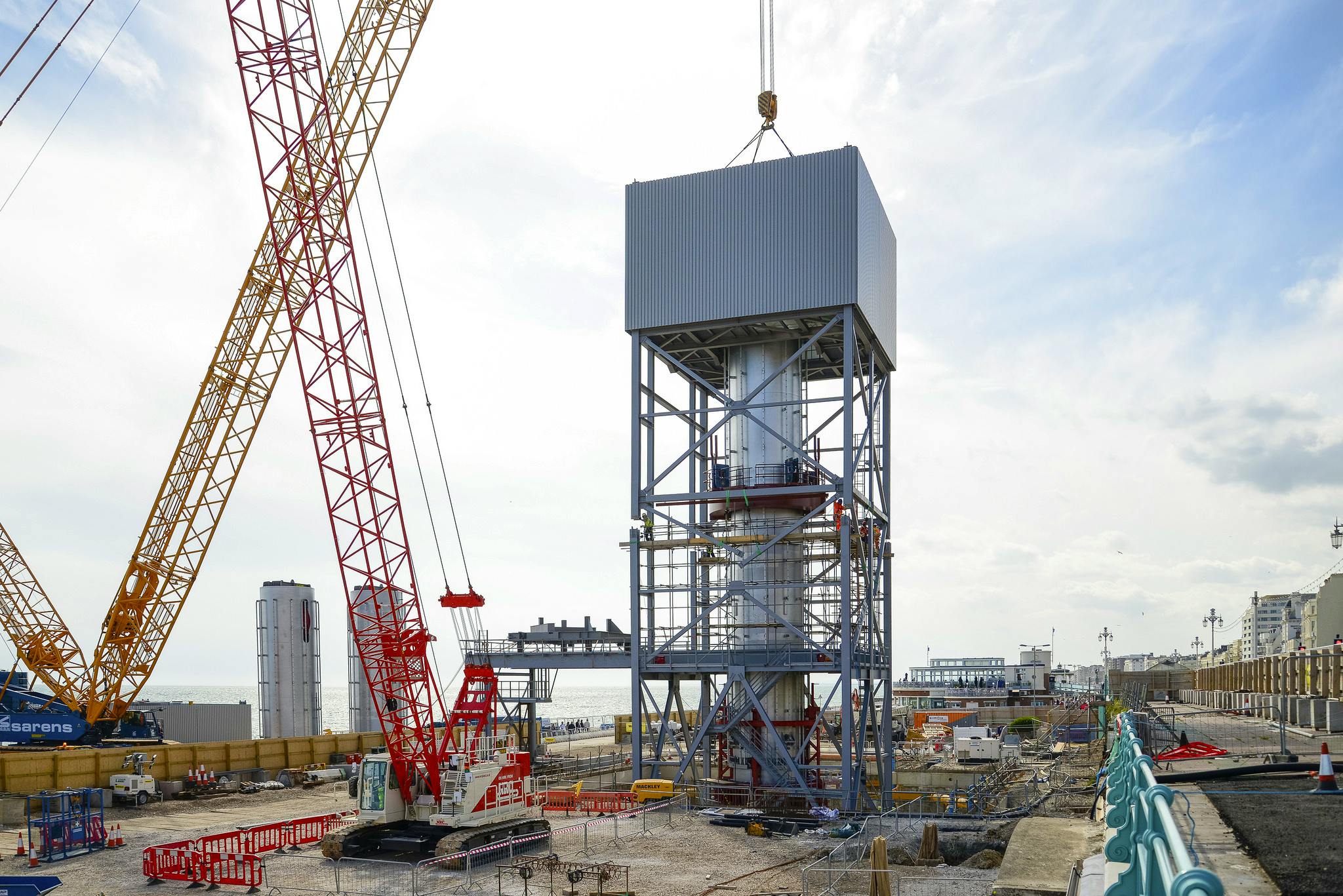With all 17 sections of the i360 now safe and sound on the seafront attention turns to the construction of the tower.
Four of the 17 steel cans are already in place – numbers one, two, three and 14 (can number one is the bottom can, can number two is the one on top of can number one, with can number 17 the top can).
The 200 tonne yellow crawler crane currently on site lifted those first four cans into place and will, one by one, lift cans 15, 16 and 17 into place where they will be bolted down onto the can below.
At the same time, the crawler crane will also lift the remaining sections of the 60 metre high jacking tower into place.
During the design stage the i360’s engineers Jacobs considered two main options to build the tower: namely jack-up or build-up.
The jacking tower is a temporary steel frame that allows the construction team to build the i360 using a jack-up rather than the conventional build-up method. Put simply, the build-up method would require a crane and lifting capacity to above the top level of the tower and would involve working at height in what would be very difficult conditions.
The jacking tower is equipped with cable jacking systems attached to a 16 tonne steel collar which fits over the cans and is used to lift the cans up in order for the next can to be placed underneath.
The steel collar can be lowered within the jacking tower and be attached to a can. Four strand jacks, each with a lifting capacity of 450 tonnes, will then gradually jack up the cans stacked above, high enough so a new section of tower can be slid underneath using the skidding track – the piece of the jacking frame near the bottom which sticks out to one side.
For example, the first jack session will see cans 14, 15, 16 and 17 lifted and the engineering team slide can 13 into place. Once that is bolted to the cans above, the process can begin again.
That first jacking will see the tower lift around 315 tonnes, made up of the top four cans and the counterweight which will be used to help the i360’s viewing pod rise and descend once the attraction is open.
This operation will be carried out ten times over the coming weeks. Can three – which is currently in place but will be removed prior to the first jacking in order to place can 13 – will be re-installed at the end to complete the 162 metre high tower.
The final lift – all the cans from number four to number 17 – will be 980 tonnes and the tower is scheduled to be in place by early September.
Once the tower is finished, the jacking frame will be removed by Hollandia, the i360’s main contractors carrying out the build.
Although it arrived in four large sections, it was originally fabricated in smaller pieces and partly pre-assembled in Hollandia’s yard in Rotterdam. It obviously won’t be possible to lift the sections off site in the same way it was delivered, so it will be taken down in smaller sections.
While up and lifting, the jacking tower will also be used to fit the exterior cladding to each section of tower. The top can – can number 17 – already has its 5mm thick skin of expanded aluminium curved panels fitted. Each of the remaining cans will have that cladding added during the jacking process.
David Marks, architect of the i360, said: “Building the i360 is a formidable engineering operation.
“The jacking tower is a vertical factory, a vertical production line.
“Individual steel cans go in at the bottom, and the finished tower comes out of the top, with the steel cans safely bolted together and clad in an eye-catching, diaphanous, aluminium veil.”


